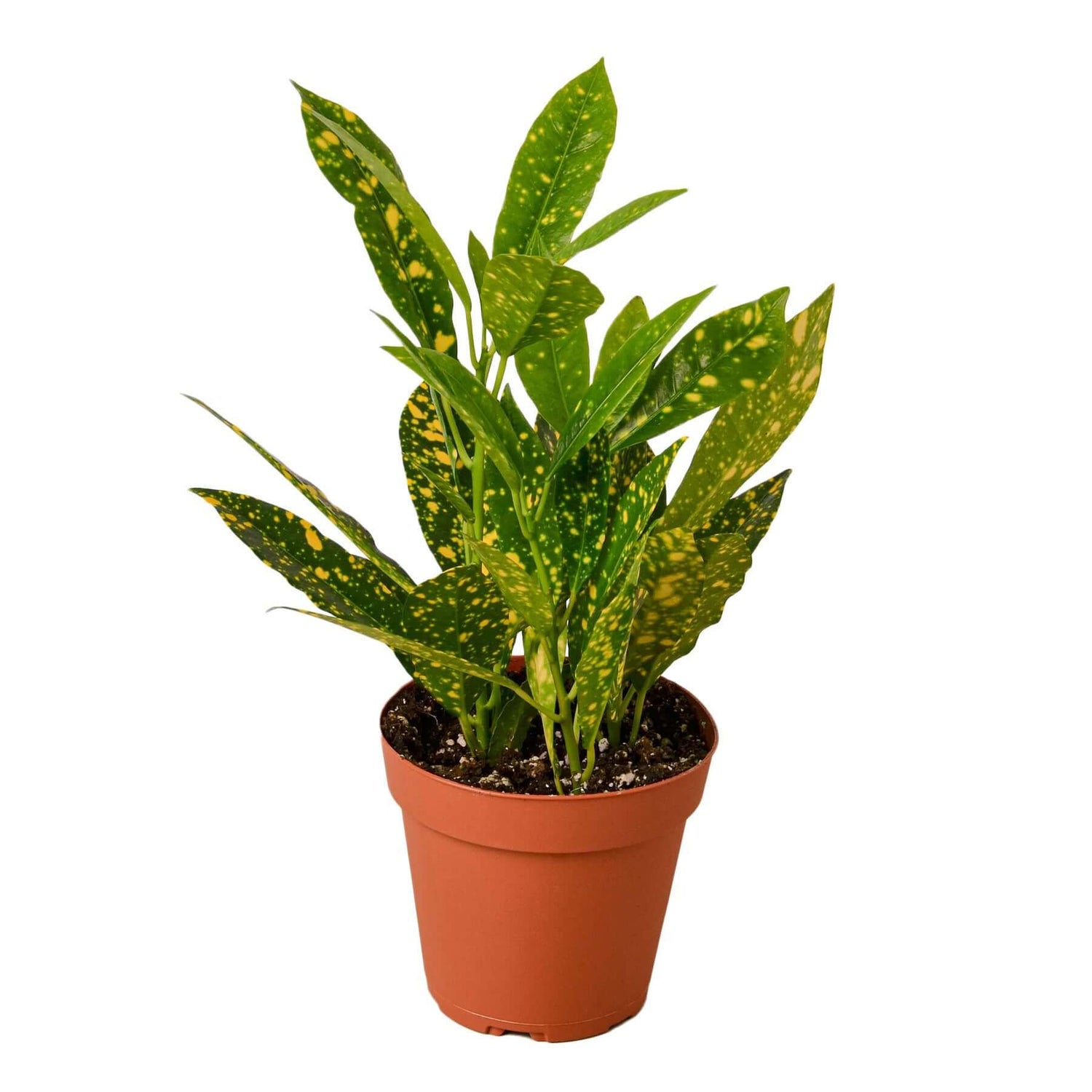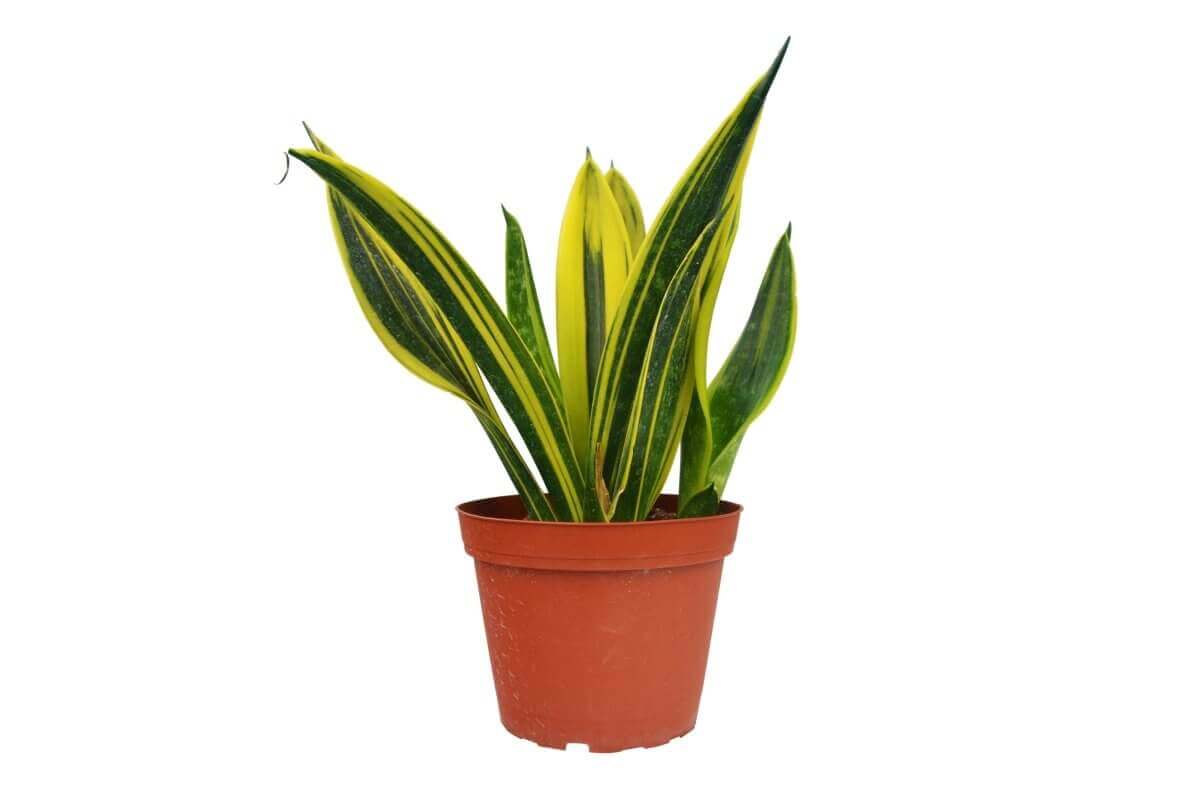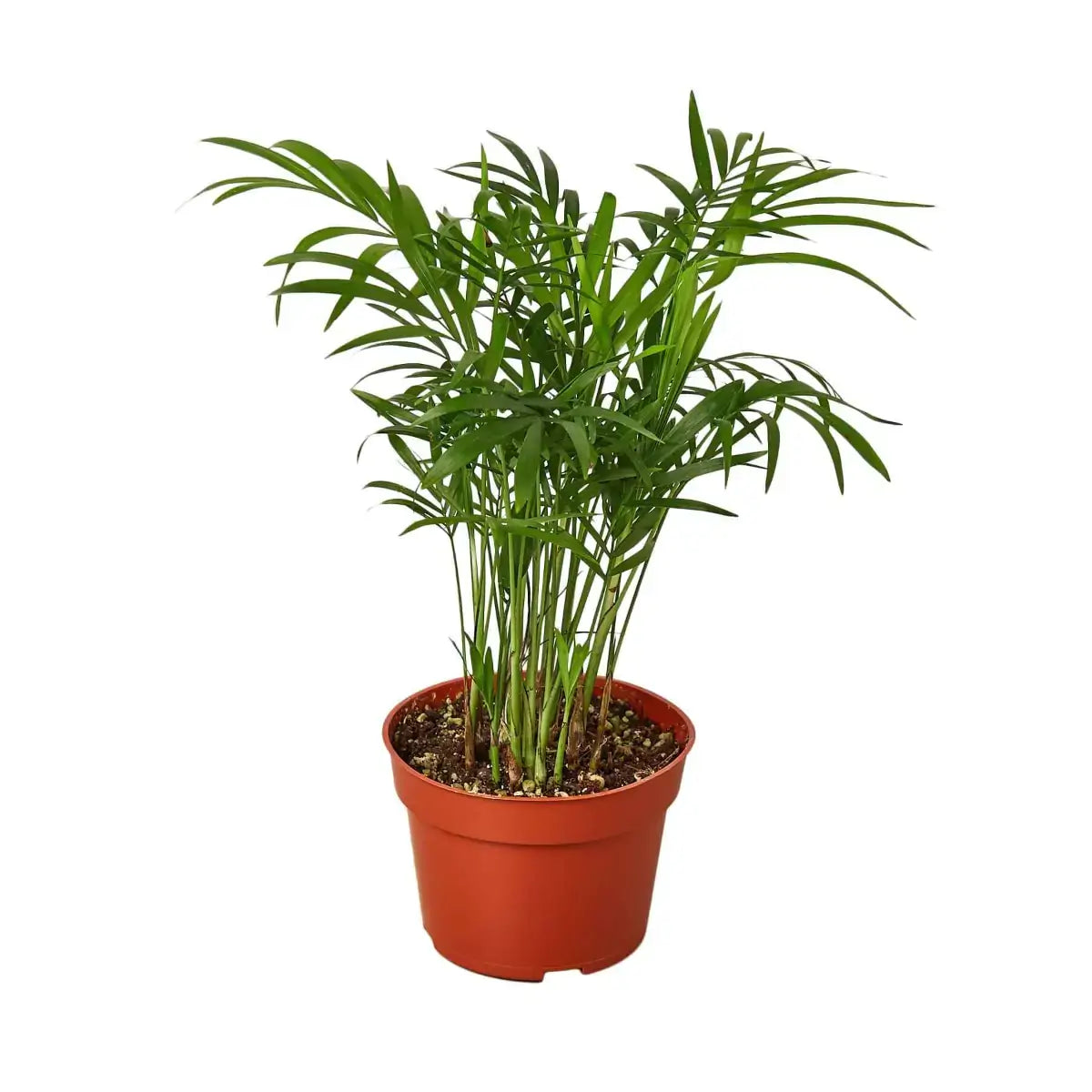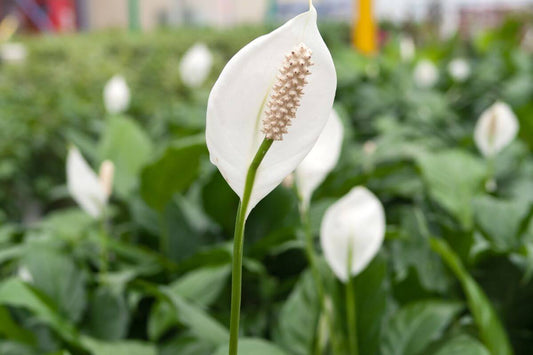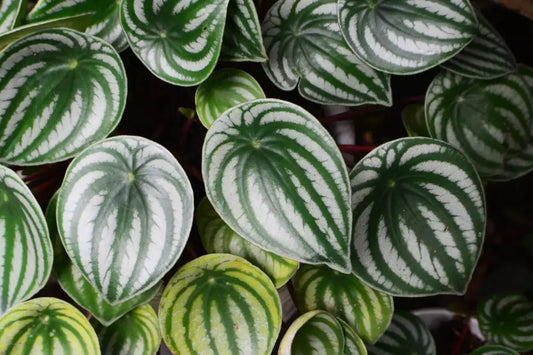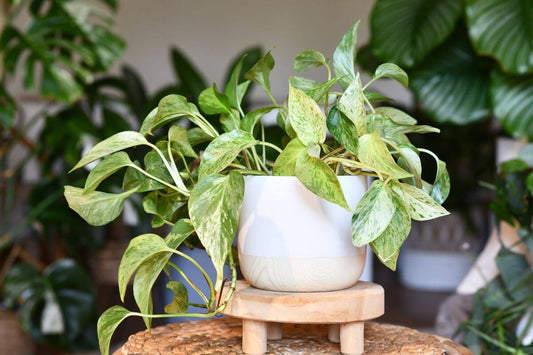Snake Plants, also known as Sansevieria, are versatile, low-maintenance houseplants loved for their resilience, air-purifying benefits, and architectural beauty. In this guide, we’ll dive deep into their characteristics, care tips, propagation methods, and more—everything you need to help them thrive indoors.
Snake Plant Characteristics
| Category | Details |
|---|---|
| Botanical Name | Dracaena trifasciata (formerly Sansevieria trifasciata) |
| Common Names | Snake Plant, Mother-in-Law’s Tongue |
| Size | 6 inches to 4 feet tall, depending on the variety |
| Native Area | Tropical West Africa |
| Flowers | Rarely blooms indoors; when it does, produces fragrant greenish-white flowers |
| Toxicity | Mildly toxic to pets and humans if ingested |
How to Care for a Snake Plant
Snake Plants are nearly indestructible and can survive in conditions that would kill most other plants. However, with proper care, they will thrive and even bloom.
1. Light
-
Best: Bright, indirect light
-
Tolerates: Low light and some direct sunlight
Tip: While they tolerate low light, placing them in medium to bright light will encourage faster growth.
2. Watering
-
When to Water: Water when the top 1-2 inches of soil are dry.
-
Frequency: Every 2-6 weeks, depending on the season (less in winter).
Tip: Snake Plants are prone to root rot, so always err on the side of underwatering.
3. Soil
-
Use a well-draining, sandy potting mix (similar to a cactus mix).
-
Recommended Mix: Equal parts potting soil, sand, and perlite.
4. Temperature and Humidity
-
Ideal Range: 60°F to 85°F (15°C to 29°C)
-
Humidity: Tolerant of dry indoor air but benefits from moderate humidity.
5. Fertilization
-
Feed with a general-purpose houseplant fertilizer once a month during the growing season (spring and summer).
How to Get a Snake Plant to Bloom
Snake Plants rarely bloom indoors, but you can encourage flowering by replicating their native environment.
Steps to Encourage Blooming:
-
Provide Bright Indirect Light: More light increases the chance of blooms.
-
Allow Drier Conditions: Slightly stress the plant by watering less frequently.
-
Cooler Nights: Provide nighttime temperatures around 60°F (15°C).
Bloom Alert: When Snake Plants bloom, they produce small, fragrant flowers on tall spikes, usually in spring or summer.
How to Propagate a Snake Plant
Propagation Methods:
-
Division Method:
-
Remove the plant from its pot and separate the root ball into sections, ensuring each section has roots attached.
-
Plant the sections in individual pots with fresh soil.
-
-
Leaf Cutting in Soil:
-
Cut a healthy leaf into 3-4 inch sections.
-
Plant the base end of each cutting about 1 inch deep in soil.
-
-
Leaf Cutting in Water:
-
Place the cuttings in a jar of water, ensuring only the base is submerged.
-
Once roots develop (usually 4-6 weeks), transfer to soil.
-
Potting and Repotting Snake Plants
When to Repot:
-
Every 2-3 years or when roots are growing out of the drainage holes.
Steps:
-
Choose a pot 1-2 inches larger than the current pot.
-
Use well-draining soil to prevent waterlogging.
-
Water lightly after repotting to encourage root growth.
Tip: Snake Plants prefer being slightly root-bound, so don’t rush to repot unless necessary.
Pruning Snake Plants
Pruning helps maintain the plant’s shape and remove any damaged leaves.
How to Prune:
-
Use clean, sharp scissors or shears.
-
Cut off any brown or damaged leaves at the base.
-
Trim any overgrown areas to maintain the plant’s shape.
Tip: Pruned leaves can be used for propagation.
Popular Snake Plant Varieties
- Sansevieria trifasciata 'Laurentii': Known for its tall leaves with yellow edges.

- Sansevieria Zeylanica: Robust and elegant houseplant with long, sword-like leaves featuring intricate gray-green, mottled patterns.

- Sansevieria 'Moonshine': Silvery-green leaves with a soft, elegant appearance.

- Sansevieria Trifasciata 'Black Robusta': Compact, rosette-shaped growth ideal for small spaces.
![Snake Plant Black Robusta - Indoor Plants | Care Tips: [Brief care tip] | Keywords: [relevant keywords]](https://cdn.shopify.com/s/files/1/0640/1179/6685/files/snake-plant-black-robusta-indoor-plants-780551.jpg?v=1728662416)
- Sansevieria Twist: A unique variety with twisted leaves, adding a bit of flair to your plant collection.
- Sansevieria Jadem Braided: This striking variety features braided leaves, perfect for an eye-catching addition to your home.
- Sansevieria Black Gold: Its deep green leaves with striking golden edges give Black Gold a sophisticated appearance.
- Sansevieria Sayuri: Sayuri’s silver-blue leaves offer a cool and elegant look, perfect for minimalistic interiors.
- Sansevieria Fabi: Fabi's compact and robust growth makes it a perfect choice for smaller spaces or office desks.
- Sansevieria Shark Fin: Known for its large, fin-shaped leaves, Shark Fin is a rare and highly sought-after variety that makes a bold statement.
Common Pests and Problems
Pests:
-
Mealybugs: Remove with cotton swabs dipped in alcohol.
-
Spider Mites: Spray leaves with a neem oil solution.
-
Scale Insects: Wipe with insecticidal soap.
Common Problems:
-
Yellowing Leaves: Caused by overwatering or poor drainage.
-
Brown Leaf Tips: Low humidity or inconsistent watering.
-
Mushy Leaves: Sign of root rot; reduce watering and improve drainage.
Benefits of Snake Plants
-
Air Purification: Filters toxins like benzene, formaldehyde, and xylene.
-
Low Maintenance: Thrives on neglect and adapts to various conditions.
-
Improves Sleep: Releases oxygen at night, making it ideal for bedrooms.
-
Aesthetic Appeal: Architectural leaves enhance any indoor decor.
FAQs About Snake Plants
Q: Are Snake Plants toxic to pets?
A: Yes, they are mildly toxic to cats and dogs if ingested. Keep them out of reach of pets.
Q: How often should I water my Snake Plant?
A: Water every 2-6 weeks, depending on the environment and season.
Q: Why are my Snake Plant leaves curling?
A: This could be due to underwatering, low humidity, or root-bound conditions.
Q: Can Snake Plants grow outdoors?
A: Yes, they can grow outdoors in warm, frost-free climates.
Q: How long does it take to propagate Snake Plants?
A: Propagation typically takes 4-6 weeks for roots to form, depending on the method.
Why Snake Plants Are Perfect for Beginners
Snake Plants are known for their toughness and ability to thrive on neglect. Whether you're a seasoned plant parent or a complete beginner, this plant will reward you with its striking upright leaves and ability to adapt to various conditions, including office environments.
Here are a few reasons why Snake Plants are perfect for both homes and offices:
- Low Maintenance: Snake Plants can survive with very little water and can tolerate low light, making them an ideal choice for forgetful plant owners or busy office settings.
- Air-Purifying: NASA has listed Snake Plants as one of the top air-purifying plants. They help remove toxins like formaldehyde and benzene, improving indoor air quality in your home or office.
- Resilience: Whether you place it in a sunny window or a dim corner, the Snake Plant is adaptable and can withstand both extremes, making it perfect for office environments with variable light.
Final Thoughts
Snake Plants are the perfect combination of beauty and resilience. With their air-purifying properties and easy care, they make an excellent addition to any home or office. Whether you’re looking to grow your first houseplant or propagate a thriving collection, Snake Plants have something to offer everyone.
Ready to bring one home? Explore our Snake Plant Collection and transform your space with nature’s charm.
Happy planting! 🌱
Not Sure Which Plant Suits You Best?
Take our Plant Quiz to discover the ideal plants for your home or office based on your unique preferences. Let us recommend your next green addition!









